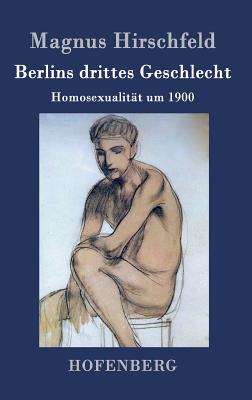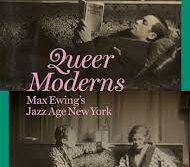 Berlin’s Third Sex
Berlin’s Third Sex
by Magnus Hirschfeld
Translated by James J. Conway
Rixdorf Editions, 150 pages, $24.
I TEACH a graduate course in sex and gender for students in a counseling program at a university in New York City. An essential component of the course is a module on the history of psychotherapy with LGBT people. Most of my students have no knowledge of how psychotherapy has been used in the past as an instrument of social control designed to “adjust” individuals to what was considered “normal” expressions of gender and sexual orientation. Students are often shocked by the long history of psychiatric theories and practices that were applied to “cure” LGBT people of their sexual orientation. Indeed many students have little comprehension of the epic struggles that led to hard-won gains in LGBT civil rights.
When I received a copy of Berlin’s Third Sexby Magnus Hirschfeld (1868–1935), I immediately decided to use the book as a reference for my class. Written in 1904, Hirschfeld presents a picture of gay and lesbian life in Berlin at the turn of the 20th century. We learn about the tea dances, hustlers, drag kings and queens, lesbian bars, cruising, campy humor and kitschy aesthetics, blackmailers, police raids, and gay ghettos. We learn about the vibrant gay subculture that existed way before the famous (or infamous) Weimar years of the 1920s.
This volume was the first of many works produced by publisher Hans Oswald (1873–1940) as part of his “Metropolis Documents” project. The project ultimately encompassed 51 titles that were focused on marginalized groups—the homeless, vagrants, homosexuals, prostitutes, political radicals, and so on—in short, all those who did not conform to the prescribed roles of German society.
Hirschfeld’s study of what he termed the “third sex” was designed as a plea for greater tolerance and normalization for those who did not conform to the heterosexual binary. He was a pioneering activist for sexual diversity—lesbian and gay as well as transgender identities. And Hirschfeld strongly advocated for women’s rights to suffrage and birth control. He worked tirelessly to repeal Paragraph 175 of the German penal code that criminalized homosexuality. (It was finally repealed in 1994.) In 1897, he founded the Scientific Humanitarian Committee, whose major campaign was to advocate for the decriminalization of homosexual acts.
Hirschfeld’s most important project was the establishment of the Institute for Sexual Science, which lasted from 1919 to 1933. The Institute’s main focus involved research on sex and sexuality, including the study of sexual diversity. Hirschfeld believed that homosexuality was a naturally occurring biological phenomenon on the continuum of sexuality. He posited that lesbians and gay men were an “intermediate sex” or “third sex.”
When the Nazis came to power in 1933, the Institute was closed down and its research and books were burned during one of the Nazis’ book burning sprees. Hirschfeld fled Berlin and died at age 67 in Nice, France, in 1935.
Long before the work of Alfred Kinsey or Masters and Johnson, Magnus Hirschfeld attempted to study sexuality and gender in a nonjudgmental, scientific context. Berlin’s Third Sex offers a window into a moment in history during which we can observe the beginnings of modern LGBT identities taking shape. Hirschfeld’s personal motto was: “per scientiam ad justitiam”—“justice through science.” In this era of fake news and alternate realities in Washington, Hirschfeld’s motto has a particular resonance.________________________________________________________
Irene Javors, LMHC, is a psychotherapist in private practice in NYC.




